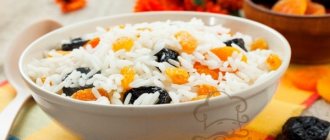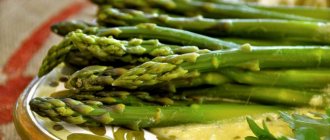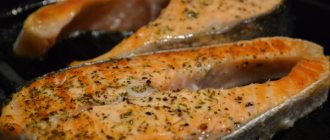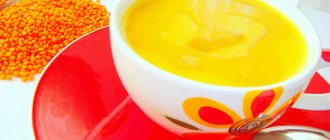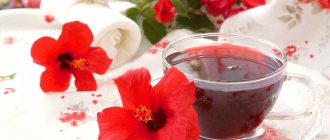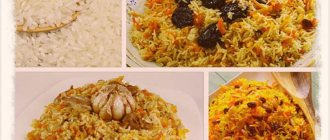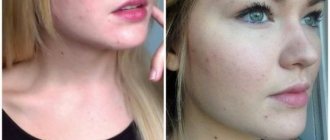What is Helba, 20 beneficial properties, how to brew and drink, research
Helba is an annual plant of the Legume family. The first information about it was found in the records of the ancient Egyptians dating back to 1550 BC. Helba is mentioned as one of the ingredients in the composition for embalming, anti-burn and to facilitate childbirth. In Ancient Greece, decoctions from the plant were given to gladiators before battles, and the philosopher Avicenna called it his favorite medicinal herb.
Currently, helba is known as fenugreek, shambhala, fenugreek, “Greek hay”, abish, hilbe, Egyptian yellow tea, methi. It is grown in the Caucasus, Eastern Europe, Turkey, Egypt, Saudi Arabia, Ethiopia, and Central Asia.
Helba looks inconspicuous. This is a shrub up to 60 cm high with oblong leaves arranged in 3 layers. It has small flowers, from which elongated pods with yellow grains are formed, shaped like pomegranate seeds (see photo).
There are about 100 types of helba in total, the most famous are blue and hay. The first is included in Indian sauces and seasonings, and the second is known as a remedy. It is even mentioned in the Islamic Sunnah as a medicine or “faraj” - the salvation recommended by the Prophet Muhammad.
However, helba is popular not only in the East. It is often found in European traditional medicine recipes, as well as in modern drugs for various diseases. The beneficial properties of the plant, possible harm, options and rules of use are described below.
What is helba
Helba is an annual plant native to Tibet. The plant is also called fungerek, shambhala, fenugreek. It is grown in Iran, Egypt and other eastern countries. The plant is a legume; its stem is round in shape and up to 70 centimeters high. Shambhala blooms with multiple and single flowers, mostly yellow, rarely, but flowers of a purple or blue hue are found. The fruits are bean-like, have an elongated spout and a cylindrical shape. It is in the seeds that all the beneficial properties of the plant lie.
The fruits are fragrant, the smell resembles a nutty aroma. The seeds are actively used for making tea, for medicinal purposes, and in cooking. Let's talk about the healing properties of helba.
Beneficial features
The most valuable raw materials of helba are considered to be grains. Refreshing and healing teas, seasonings, and cosmetics are prepared from them. However, the leaves and stems of the plant also provide benefits. They are added to salads, decoctions, and infusions. To understand why the ground part and seeds of helba are known in different parts of the world, just look at the list of positive properties:
- Strengthening the immune system.
- Removal of mucus from the lungs.
- Relieving fever during colds.
- Fight inflammation.
- Reduced blood glucose levels.
- Normalization of the gastrointestinal tract.
- Accelerates the removal of toxins from the body.
- Activation of metabolic processes.
- Eliminate constipation.
- Improving brain function.
- Giving elasticity to blood vessels.
- Reducing the likelihood of developing cancer.
- Activation of the urinary system.
- Reducing nervous tension.
- Improving reproductive function.
- Normalization of blood pressure.
- Accelerating the cell recovery process.
- Activation of hemoglobin production.
- Preventing the formation of blood clots.
- Decreased appetite.
Medicinal properties of fenugreek
Helba seeds (as fenugreek is called in eastern countries) are extremely beneficial for the body for many health problems. Eg:
- fenugreek has a beneficial effect on the functioning of the central nervous system;
- has a general strengthening, antibacterial, antifungal and anti-inflammatory effect;
- Vitamin C improves well-being and gives strength;
- Vitamin B2 contained in fenugreek helps maintain eye health;
- Vitamin B9 contained in the composition promotes more intense hematopoiesis;
- thanks to flavonoids, heart function improves;
- potassium promotes a surge of strength and increased brain function;
- magnesium normalizes general well-being and the functioning of the endocrine system and promotes muscle relaxation;
- Magnesium also reduces the risk of diabetes;
- sodium supplies the body's cells with glucose and normalizes water balance;
- Fenugreek has a beneficial effect on swelling, various stages of hemorrhoids and helps with constipation;
- Dermatologists recommend it for multiple skin diseases.
Contraindications and possible harm
Instructions for the use of helba preparations most often indicate that the plant should not be used if you are allergic to the main component. However, the list of contraindications is wider:
- Diseases associated with increased levels of estrogen in the body. The plant activates the production of the hormone, and therefore provokes an exacerbation of the pathology.
- Vaginal bleeding. Helba interferes with the coagulation process and can aggravate the symptom.
- Insulin-dependent diabetes. The herb increases sensitivity to the drug, which leads to the appearance of signs of excess insulin in the body.
Use Helba for the treatment and prevention of pathologies only after consulting with your doctor and calculating a safe daily dose.
Fenugreek contraindications, harm
Contraindications to fenugreek include: - allergies to the constituent substances of the plant; — people who have disorders of the thyroid gland; - presence of asthma; - children under 10 years of age; - pregnancy, especially in the first three months; - uterine bleeding; - exacerbation of gastrointestinal problems; - oncological diseases, especially of the genital area, in both women and men. — Diabetics and hypertensive patients should take fenugreek with caution.
Shambhala reduces blood clotting, and therefore is not recommended if you are prone to bleeding.
Feature benefits for women and men
Some medicinal plants are called “female” or “male”. Helba is universal, equally useful for representatives of the stronger and weaker sex.
Effects on men:
- Infertility. Drinks with shamballa stimulate the production of sperm, improve their quality, and help eliminate inflammation that causes reproductive dysfunction. Take the remedy no more than 3 times a day.
- Potency. The plant contains substances that stimulate the production of testosterone and relieve genitourinary diseases. To maintain potency, drink tea from the seeds 3 times a day, 200 ml, or take 2 tablespoons of powder mixed with a glass of milk.
- Physical exhaustion. Helba tones the body, relieves insomnia, and helps restore strength. To recover after hard work, drink a cup of tea. Sprouted seeds help get rid of muscle pain and activate growth.
Useful properties of helba for women, how best to take it:
- Increased lactation. Promotes the production of prolactin, so during breastfeeding you can drink a cup of bean tea once every 2 days.
- Reducing symptoms of PMS and menopause. Phytohormones contained in the plant help reduce uterine spasms during menstruation and eliminate estrogen imbalance during menopause. Relieves pain during menstruation and helps regulate the cycle. The sedative and anti-inflammatory effects of helba contribute to improving women's health. Drink 1 cup of seed tea 3 times a day.
- Breast augmentation. One of the factors influencing bust size is high estrogen content. Helba stimulates hormone production and is used to maintain breast beauty. According to women, the bust becomes larger with regular consumption of sprouted or roasted seeds of the plant.
- Vulvitis. For inflammation of the external genitalia, douching and hygiene procedures with helba infusion stimulate the restoration of damaged tissue, block the spread of infection, and relieve itching and discomfort.
- Infertility. The plant helps speed up conception because it activates the work of the ovaries. To get pregnant, take Helba tea before ovulation or after menstruation.
Price of tea and where to buy it
You can buy yellow tea in Egypt. Local residents willingly treat tourists, so you can try this amazing drink everywhere: at a party, in a cafe or restaurant, and even in a tea shop. Guides can always help you purchase yellow tea. Sometimes fenugreek seeds are sold in spice shops (both in Egypt and Russia). In Russia, yellow tea from Egypt is available in some specialized online stores, but, unfortunately, it is not easy to find such stores. So if your friends and relatives are going on a trip to the land of the pharaohs, then be sure to ask them to bring them this wonderful tea. The price reaches 324 rubles per 100 grams; in Egypt you can buy 1 kg of yellow tea for about $1.5.
Video
Pregnant and lactating women, research
Helba is not recommended for use during pregnancy. The plant stimulates uterine contractions and can cause miscarriage. Doctors believe that Shambhala makes childbirth easier. However, if bleeding occurs, it becomes dangerous because it slows down the resolution of the problem.
When breastfeeding, teas with helba are used to enhance lactation. The effectiveness of the product among women is proven by studies by Palestinian scientists. In 2020, they published the results of work aimed at collecting feedback from gynecologists and nursing mothers about the plant’s effect on the rate of breast milk production.
- accelerating the body's recovery after childbirth;
- normalization of digestion;
- increasing the volume of breast milk;
- antioxidant effect;
- improving the body's defenses;
- breast cancer prevention;
- eliminating constipation;
- normalization of hormonal levels.
Disadvantages of the plant that appear when used incorrectly:
- decreased blood clotting rate;
- possible worsening of asthma symptoms;
- provoking nausea, vomiting, diarrhea;
- sweating;
- mastopathy.
Chemical composition of fenugreek
Fenugreek contains a huge amount of chemical elements, nutrients, minerals and vitamins.
- routine;
- phosphorus;
- tannins;
- flavonoids;
- a nicotinic acid;
- steroid saponins;
- coumarin;
- bitter substances;
- magnesium;
- arsenic;
- zinc;
- starch;
- nitrogenous substances;
- vitamins C, A, B2, B9, B1.
This is not the entire list of chemical elements.
Classic recipes for brewing Helba tea
The video also demonstrates a quick method for brewing helba with milk.
Recipe for bust enlargement
The latter technique is the most popular, since at the same time as improving the bust of girls, they treat female diseases.
Recipe:
- wash the seeds;
- dry the raw materials in a frying pan until a golden hue appears;
- Pour 2-3 teaspoons into a deep container and fill with hot water;
- cook in a steam bath or low heat for 5-6 minutes.
Drink 1 cup 3 times a day.
Fenugreek for hair
Shambhala has found its application not only in medicine, but also in cosmetology. So, many girls and women use it to improve the condition of their hair. For example, a mask to strengthen hair follicles and add shine to hair is prepared as follows:
- Two drops of sandalwood and fenugreek oils should be mixed with three tablespoons of coconut oil. After thorough mixing, apply the mixture to the hair roots and distribute along the entire length to the very ends. Wrap your head in a warm towel and leave for two hours. After this, rinse and wash your hair with shampoo.
To strengthen your hair and make it soft, you can prepare an infusion of fenugreek seeds:
- Pour 1 dessert spoon of fenugreek seeds into a glass of hot water. Leave for 10 minutes. Strain and apply to dry hair. You can use this product 3 times a day for several days in a row.
For severe hair loss, traditional medicine suggests preparing a mask based on fenugreek seeds. For it you will need:
- fenugreek seeds 1 tablespoon. One glass of boiling water. Pour boiling water over the fenugreek seed and simmer over low heat for at least 10 minutes. Then turn off the heat, cool and add a few drops of black cumin oil. Strain and grind the remaining pulp using a blender. Then apply to the hair roots. Wrap your head in a warm towel and leave for 2-3 hours. Rinse off with purified water.
- Fenugreek essential oil removes dandruff and increases hair growth due to the flow of blood to the hair follicles.
The benefits and harms of helba for diseases
The plant has a wide list of indications for use. However, for each disease, take into account the specific effects of helba on humans:
- Angina. Gargling with a concentrated decoction speeds up recovery because it stops the spread of infection and relieves inflammation and pain. During treatment, avoid swallowing the drink, since it is prepared at the rate of 50 grams of beans per 500 ml of water. This concentration is useful when used topically, but if ingested it causes diarrhea and allergies.
- Bronchitis. Herbal tea promotes the release of phlegm, reduces fever, and activates the body's defenses. The result of the treatment appears faster if the helba is brewed in a thermos in equal parts with thyme and marshmallow root, filled with hot water. Take 1 tablespoon of the product up to 8 times a day. You cannot drink the entire dose at once, as it can provoke an allergy and a severe coughing attack.
- Stones in the kidneys. A decoction of dates and helba seeds eliminates congestion in the kidneys and reduces the likelihood of exacerbation of the disease. To prepare, we use 5-6 fruits, 0.5 teaspoon of grains, 400 ml of water. Cook over low heat until 1/3 of the liquid has evaporated, strain after cooling. Drink 100 ml 3 times a day. The drug should not be taken during an exacerbation of urolithiasis, since the active functioning of the excretory system creates a dangerous load on the kidneys.
- Prevention of heart disease. Tea made from grains and leaves reduces cholesterol levels, prevents the formation of blood clots, eliminates the risk of stroke, and improves the condition of the heart muscle. Restriction on the consumption of drinks - pathologies accompanied by low blood pressure.
- Haemorrhoids. Helba eliminates one of the main causes of inflammation – constipation. During treatment, it is recommended to drink tea in the morning on an empty stomach. If the pathology is advanced and surgical intervention is necessary, consult a doctor.
- Anemia. A drink of 1 teaspoon of grain powder, 1 glass of milk and a spoon of honey helps to compensate for the lack of iron. Drink the product no more than 2 times a day; increasing the dose will lead to bloating and diarrhea.
- Sinusitis. Inflammation of the paranasal sinuses is eliminated using a decoction of seeds made from 1 teaspoon of raw materials and 250 ml of water. The patient gets better if he drinks 2 cups of liquid per day. The product can only be used to treat adults. The decoction will cause stomach upset in a child.
- Arthritis. Reduction of inflammation and joint pain is accelerated by a remedy prepared according to this recipe: 3 tablespoons of ground grains, pour 500 ml of cold water, leave for 3 hours. Bring the resulting liquid to a boil and strain. We take 50 ml 3 times a day. To enhance the effect, add honey.
- Prevention of gastritis, heartburn. Helba relieves irritation of the gastric mucosa. Unpleasant symptoms can be avoided if you eat food seasoned with 1 teaspoon of plant powder once a day. Avoid combining with products that have a laxative effect.
- Skin diseases. Helba-based ointment helps against rashes, boils, purulent wounds, fistulas, and calluses. Preparation: in an enamel container, mix the powder with water until the consistency of sour cream is formed. With continuous stirring, heat the resulting mixture over low heat for 10 minutes. Let the product cool, apply to the inflamed area, and cover with a gauze bandage. Leave for 2 hours, rinse with warm water. Cannot be used if you have allergies.
- Hepatitis. Helba prevents the destruction of liver cells, activates the removal of toxins, and improves the composition of bile. For treatment, it is recommended to brew and drink tea from seeds roasted until brown.
- Worms. The herb accelerates the elimination of waste products of parasites and helps to avoid complications caused by the presence of helminths. Infusions are used for therapy, and medicinal tea is used for prevention.
Diabetes mellitus, research
In 2013, employees of a medical college in India conducted a study on the effect of helba seeds on stage 2 diabetics. 60 patients who were diagnosed with pathology 6 months before the start of the experiment were selected for work. The subjects were divided into 2 groups. The first, in addition to the main treatment, received 10 grams of seed powder daily, the therapy of the second was limited to standard methods.
A study found that taking the herbal remedy accelerates the reduction in blood sugar levels. However, scientists noted: the indicator changes gradually, and to achieve tangible results, the use of helba should last 6 months.
Preparation - how to brew
Since Helba tea is a seed, its preparation differs significantly from the preparation of loose leaf tea; the seeds are not brewed as easily as the leaf. To ensure that all the beneficial substances are preserved in the tea, it is recommended to soak the seeds in cold water for approximately 3 hours before preparing it. There are several ways to brew the drink:
- Pour one glass of water into the infuser, add one teaspoon of soaked seeds, and bring to a boil. Boil for five minutes. To obtain a stronger drink, the number of seeds for brewing is doubled.
- In a hot frying pan (without oil), fry one teaspoon of seeds for 2-3 minutes until light brown. Next, the seeds are poured into a metal or enamel bowl, poured with a glass of boiling water and boiled for 5-10 minutes. The boiling time depends on the desired strength of the drink.
- Fry the required volume of seeds in a dry hot frying pan and let cool. Next, grind the seeds in a coffee grinder (it is important that it is clean, without coffee aroma). Pour one teaspoon of the prepared powder into a glass and pour boiling water over it. The drink should infuse for 10 minutes.
Yellow helba tea has many beneficial properties; how to brew it so that it is beneficial in the treatment of various diseases?
Mix 200 ml of clean water with 2 teaspoons of ground beans. Keep the container with the mixture on low heat for five minutes. You can pour boiling water over the beans overnight and leave them to steep overnight. Drink this tea, adding figs or honey, before meals.
For the treatment of sore throat
Pour 500 ml of boiling water into a ladle, add 2 tbsp. spoons of fenugreek. Set the heat to minimum and cook the mixture for half an hour. Strain the broth after 15 minutes. The resulting decoction should be used to gargle. Inflammation is relieved after just a few procedures.
For the kidneys
How to brew tea to treat kidneys? 5 tbsp. spoons of crushed seeds should be poured into a saucepan, add 200 ml of water, 2-3 dates. Boil the mixture for seven minutes. Strain the tea, take 300 ml per day in three doses. Regular consumption of the drink will crush small kidney stones and clear them of sand.
For bronchitis
Fenugreek – 1 teaspoon
Fennel seeds - 1 teaspoon
Elderberry - 1 teaspoon
Tricolor violet - 2 teaspoons
Linden blossom - 2 teaspoons
All herbs are mixed, for 200 ml of water you need to take 1 tbsp. a spoonful of herbal tea. The mixture should be infused for two hours, then it should be boiled for five minutes. The resulting drink should be drunk all day. Tea should be drunk warm. It is believed that drinking yellow tea along with other medicinal herbs will help cure even chronic bronchitis.
For treating women
Regular use of fenugreek seed infusion helps normalize hormonal levels, relieve pain symptoms during menstruation, and restore the cycle. Tea has an amazing effect on the body of nursing women. Helba enhances lactation. To increase the amount of milk, you need to prepare an infusion.
Fenugreek decoction can be used for douching. To do this, pour 2 teaspoons of beans with a glass of boiling water, cover, and let steep for 20 minutes. A course of douching will help restore the vaginal microflora.
Application in cosmetology
Scientists from Asia and Africa have written entire books explaining what helba is and how to use it. The works contain sections on the use of plants in cosmetology. Homemade and industrial products are prepared from it to strengthen hair, rejuvenate the face, and correct body shape. Below are the beauty product options.
Face masks
For hair
Oil for breast shape correction
To improve the shape of the bust, mix 50 ml of linseed oil and 8 drops of helba oil. Rub in a circular motion into the chest area counterclockwise. After 5-7 minutes we take a contrast shower. Repeating the procedure every 3 days makes the bust elastic and promotes enlargement.
Recipes for treatment, weight loss, increased lactation and other purposes
For medicinal purposes, yellow tea from Egypt is recommended to be used in combination with other ingredients that can enhance its effect. Below are the most common, effective recipes for treating diseases and other purposes.
Table: How to use Shambhala infusion
| Purpose of application | Ingredients and method of preparation | Instructions for use | |
| Treatment of respiratory diseases | Colds and pulmonary diseases | 2 tsp. Simmer fenugreek fruits in 1 glass of water over low heat for about 10 minutes. Add honey or dates during cooking | Drink half a glass 3 times a day |
| Dry cough | 2 tsp. Boil the grains in 1 glass of milk for 7-8 minutes | Drink 2 times a day | |
| Sore throat | 2 tbsp. l. simmer the grains in 0.4 liters of water for half an hour. Let it brew for 20 minutes, then strain and add lemon juice. | Gargle with infusion 2 times a day | |
| Cleansing the stomach of accumulated waste and toxins, treating duodenum and stomach ulcers | 2–3 tsp. pour 1 cup of boiling water over the fruit, cover with a lid and let it brew (you can use a thermos) | Drink chilled, 1 glass 3 times a day before meals. | |
| Kidney cleansing, crushing kidney and bladder stones | 4–5 tsp. Boil fruits and several dates in 1 glass of water for 7-8 minutes. The broth should be thick | Drink half a glass 2–3 times a day | |
| Treatment and prevention of diabetes mellitus | 2 tsp. Soak the grains in 1 glass of hot water in the evening and leave overnight. In the morning, mix with stevia herb decoction in equal proportions. | Drink the mixture in the morning | |
| Treatment and prevention of anemia | 1–2 tsp. boil the seeds in 1 glass of water with the addition of dates or honey | Drink 2 times a day. | |
| Treatment of inflammatory joint diseases | 1 tbsp. l. fruits and 2 tbsp. simmer tablespoons of fresh stevia leaves in 1 glass of water for 5–7 minutes | Drink half a glass 3-4 times a day | |
| Treatment of female diseases, uterine contraction after childbirth | 1–2 tbsp. l. pour 1 cup of boiling water over the fruit. Leave for 15 minutes | Douche 1-2 times a day | |
| Enhancing lactation, treating impotence, weight loss | 2 tsp. Boil the grains in 1 glass of water for 8–10 minutes, then add about 30 ml of milk | Drink 3–4 glasses a day | |
| Treatment of skin diseases, wound healing, skin cleansing, getting rid of warts | 4–5 tbsp. Grind a tablespoon of grains into a powder and cook in 1 glass of water until a paste forms. You can add a little olive oil | The ointment is applied to injured skin 1–2 times a day | |
A good result can only be achieved if the procedures are carried out regularly. The healing properties of yellow Egyptian tea are observed within a few days.
How to brew an Egyptian drink correctly + video
Since the fruits of the plant, rather than the leaves, are used to prepare this tea, it is not recommended to brew it in the usual way. The taste of the drink will be fully revealed only if the hard seeds are boiled.
Yellow Egyptian tea is prepared according to a special recipe.
1–2 days before preparing tea, the fruits should be thoroughly washed and placed on paper or a towel in a dry place. In order for the tea to reveal its aroma, the dried seeds can be fried and ground. Boil the drink in a small saucepan. For 1 teaspoon of tea leaves, use 200–250 ml of water. If you prefer stronger tea, add 2 teaspoons to the same amount of water. You need to boil yellow tea over low heat for 7-9 minutes, then you can pour it into mugs and enjoy its exquisite taste.
In the video you can get acquainted with the process in more detail.
How to drink helba
You can drink tea either warm or cool - it perfectly warms and quenches thirst.
Egyptian tea has a pleasant yellow color and a peculiar nutty flavor, which each person perceives differently: for some it is just a bitter and unpleasant drink, but for others it is a whole fountain of emotions!
To remove bitterness, immediately before cooking, soak the grains for several hours in cold water.
You can diversify the taste of tea with raspberries, lemon, honey, mint, dates, ginger or figs. Yellow tea goes well with other tea infusions: regular black or green. It is also useful to replace water with milk when making tea.
Yellow Egyptian tea can be combined with any fruit, honey and milk
Not only the pyramids are considered the pride of the Egyptians, but also the local yellow tea. Residents of the country love their traditional drink and happily treat tourists to it. Some people unknowingly confuse this tea with the Chinese yellow drink. However, Chinese and Egyptian teas are completely different products.
In what form is it sold, how to choose
When choosing a product, pay attention to the following points:
- High-quality grains have a golden-brown hue and look “full.” Dark and dried out seeds indicate that they have not been stored properly or are past their expiration date.
- The oil is transparent, golden in color, without flakes or dark sediment.
- When choosing capsules, pay attention to the shelf life. Discard medications that have less than 30 days left before their final sales date.
- Buy the powder hermetically sealed. Once the package or jar is opened, use within 3 months.
History of the drink
The healing properties of the plant were known back in antiquity, when a drink made from the seeds was given to gladiators before a battle in the arena. It was believed that he was able to endow a fighter with special strength and dexterity. Helba was used as a medicine by such healers as Hippocrates and Ibn Sina, known as Avicenna.
The Egyptians used the seeds to prepare a drink, which became a tradition for this country that has survived to this day, and its gastronomic feature. Helba yellow tea, so named because of the color of the freshly brewed drink, combines benefits and original taste characteristics, which has allowed it to gain worldwide fame.
